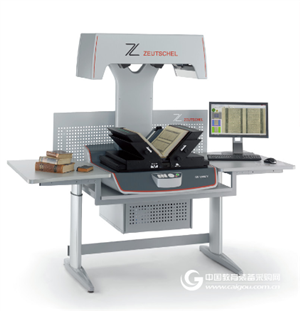As an important part of Chinese cultural heritage, ancient books have extensive academic value and research value. Today, with the rapid development of network technology, how to make better use of ancient books and more extensively play the value of ancient books is an important issue facing ancient books workers. The development and improvement of information technology has created conditions for the solution of this topic. The digitization of ancient books is undoubtedly the development trend of the development and utilization of ancient books. The problem of digitalization of ancient books is actually the application of information technology in the digital practice of ancient books.

The choice of scanning method. Scanners are an important device for ancient books scanning, and they come in many different ways. Depending on the scanning method, there are mainly flatbed scanners, high-speed scanners, and face-up scanners. So which kind of scanner is more suitable for the scanning of ancient resources? We found in practice that due to the long storage time of ancient books, most of them have been damaged, which is fragile, brittle, wrinkled and cracked. Moreover, the binding of ancient books is more complicated, and it is difficult to recover once it is disassembled. Therefore, we believe that the digitization of ancient books is not suitable for high-speed scanners for disassembly and assembly scanning. Only face-up scanners or flatbed scanners can be used. The upward dependence of both the face-up scanner and the flatbed scanner on the surrounding environment makes the images obtained by using the two scanners different. Our analysis believes that the main reason is that the page up scanner is a non-contact type scan, which is greatly affected by the surrounding environment. Therefore, the scanned image file takes up a large space and its display effect is also poor. The flatbed scanner is a contact scanning, which has low requirements on the surrounding environment. The book page is in close contact with the scanner glass plate during operation, thereby ensuring the quality of the scanned image and reducing the space occupied by the file.

So how do you choose to use these two types of scanners? In the practice of digitalization of ancient books, we first classify ancient books. For those ancient books with small or unsuitable middle seams, use the page up scanner and avoid the curvature caused by the book pages. Scan image distortion and use the corresponding image processing software. For other ancient books, we use flatbed scanners whenever possible to get higher quality images. With the improvement of scanning technology, a zero margin flatbed scanner has appeared in recent years. Because the zero-margin scanner can cope with the lesser ancient resources of the middle seam, at the same time, it only needs to paste the ancient books on the side of the scanner, which has a certain protection effect on the ancient books, greatly expanding the scanning range of the flatbed scanner. Become the best choice for ancient books scanning.

For valuable documents that cannot be dismantled, they should be scanned by the ancient book scanner. This type of scanner can fully solve the problem of black seam and font deformation caused by the scanning of undetachable documents.
The number of OS12002V professional ancient document scanners uses projection-type non-glare cold light source technology to provide extremely sufficient protection for precious ancient books and document digitization. The high-precision true color scanning lens perfectly reproduces the original details of the original, unique 90°. The V-type platen is especially suitable for digitizing precious materials that are bound into a book and cannot be fully opened. It automatically opens the press glass, adaptively adjusts the falling speed and pressure of the V-glass, and protects the literature to the utmost extent. The user-friendly design provides users with the information. A safe, reliable and ergonomic operating environment. http://v.youku.com/v_show/id_XMjY0NTI3MjgzNg==?spm=a2h3j.8428770.3416059.1
In the wide application of artificial grass, there are many accessory products, such as: TPE Grass Infill, Joint Tape, Rubber Granule, Artificial Grass Tools. These products are essential when you are laying and installing.

Artificial Grass Accessories,Artificial Grass Underlay,Artificial Grass Foam Underlay,Shockpad Underlay For Artificial Grass
JIANGSU WMGRASS CO., LTD. , https://www.wmgrasslawns.com